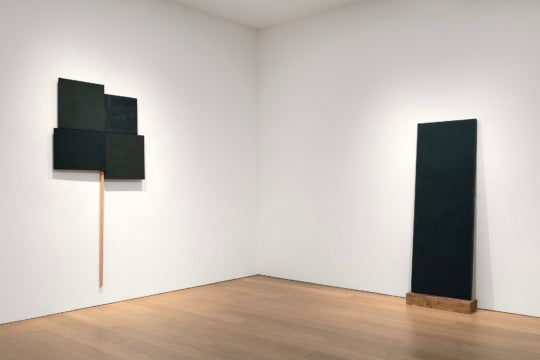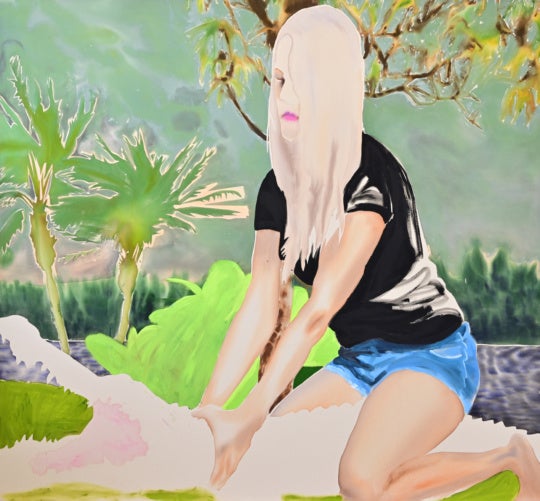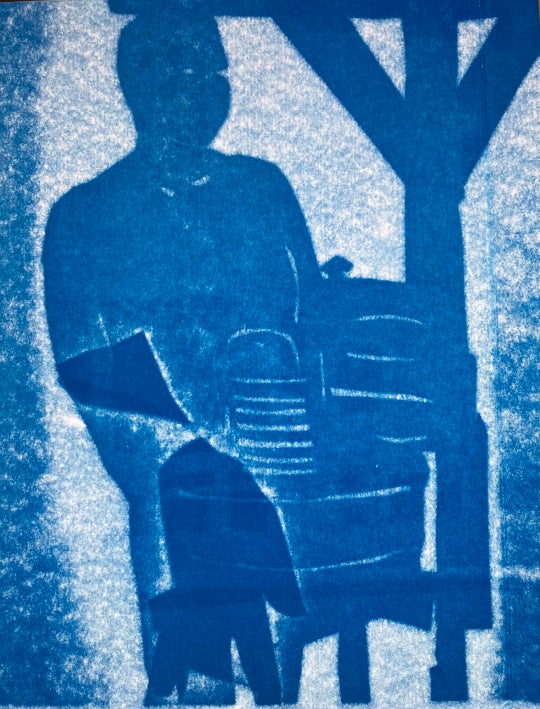
London-based artist Gonkar Gyatso turns his gaze towards his native Tibet in a new series of photographs on view at Emory University’s Michael. C. Carlos Museum. But it’s not the country’s famous mountains, rich history, or religious traditions that draw his interest. Instead, he places members of his immediate and extended family—along with himself, his American wife and young son—against a placeless, blank white backdrop. The resulting series of photographs, titled Family Album, created in collaboration with Tibetan photographer Zadhui, is a compelling, lively and resolutely contemporary take on family dynamics and modern Tibetan identity.
Images of individual family members appear multiple times in different modes of dress, sometimes in traditional Tibetan robes, elsewhere in tidily professional work clothes, and then again in the more casual uniforms of leisure time: soccer kit or sweatshirts and jeans or other street attire associated with contemporary urban life in the industrialized West—a now global style of dress.

We’ve become accustomed to thinking of the mingling of cultures as something homogenizing or conflictual: the phrase “clash of cultures” comes to mind, and the story of traditional cultures slowly and sadly eroded by Western capitalism. But Gyatso seemingly depicts something else entirely: there’s a vividness and vitality to his subjects and their varying but distinct identities. The work seems to suggest that fluctuating identity might indeed be constituent of life, part of its definitional DNA, with fixed, unambiguous identity more akin to death. Without a doubt, he’s captured the stuff of life.
Gyatso’s slightly roguish sense of humor and his pop sensibility are most evident in life-sized cardboard cutouts of his family members which create a ghostly crowd of onlookers in both galleries. The cardboard cutout is a cheesy technique most familiar from Hollywood advertising—action stars and popular comedians appear in cutouts at modern cineplexes—and there’s a touch of sly humor when the technique is applied to the middle-aged aunties and uncles, the stately grandmas and rebellious teens, among one’s own relatives. As with the more traditional photographic prints, there’s an active and unsettled imbalance between the ironic and the earnest, the heroic and the comically prosaic, the personal and the communal, Eastern and Western, public and private.

There’s an implied family epic here, a serious and moving narrative. Even when the particular disasters and heartbreaks are hidden from our eyes, we sense them nonetheless. Some of the strain of navigating these separate identities is also visible, particularly in Gyatso’s photographs of couples that occupy the first gallery. Husband and wife, grandfather and child, or mother and daughter are depicted in different phases of dress—with the mother in traditional garments and her daughter dressed for a rock concert—as if they’ve been captured at different times of day, or on their separate ways to different social occasions. The body language and facial expressions speak volumes. The various personal identities seem distinct, complete, functional, and they’re depicted here with laserlike clarity and hi-res precision. But in the end, it’s the wildly ambiguous, unspoken territory between identities that’s most evocative.
The Carlos Museum, which primarily houses ancient and cultural artifacts, does not typically show the work of contemporary artists: if I’m not mistaken Gyatso may be among the first. (There was, at a recent opening reception for museum members, an adorably awkward and uncustomary introduction of the artist.) The exhibition of Gyatso’s work was chosen as a companion to a concurrent exhibition of centuries-old Tibetan gilt-bronze Buddhas, to provide a contemporary take on Tibet as a thought-provoking counter-balance to the ancient one. It’s a stroke of good fortune that the museum selected an artist whose work is so vividly and vibrantly alive.
“Family Album: New Work by Gonkar Gyatso in Collaboration with Photographer Zhadui” is on view at the Michael C. Carlos Museum at Emory University through November 27.
Andrew Alexander is an Atlanta-based critic who covers visual art, dance, and theater.




